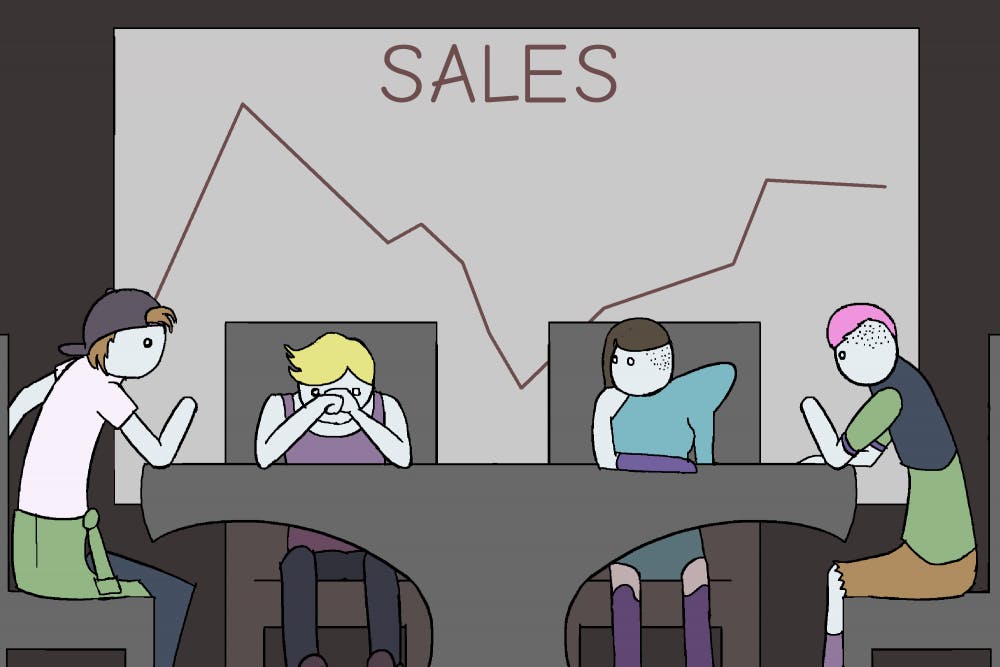Clothing, as a direct representation of our character, is responsible for shaping our expressions of creativity as well as our social interactions. It only makes sense that individuals dress themselves to fit their present circumstances. For example, most students don’t wear their pajamas to class although there are a select few who do.
For years in the business workplace, people dressed up in suits, jackets, slacks, dresses and skirts. This has begun to change in the last few years as this “professional” business dress code has evolved, thanks to the progressive mindset taking over in the business world.
Before understanding why we dress the way we do, we must first understand that clothing is closely linked to our relationships with others.
“How we present ourselves to others is often how we think of ourselves: our best mirror is not the kind you hang on the wall but the people you interact with each day,” Alexander Halavais, associate ASU sociology professor PhD, said. “So, clothes don't make the man, but the way that others perceive you, to a certain extent, does.”
In the business world, this is particularly pertinent. Many companies stress the importance of professional business attire, emphasizing that it will make others take you more seriously and could potentially put you in a higher position of power. However, the focus on business attire is changing, especially for newer tech companies.
This is due, in large part, to the companies need to attract new, younger employees. According to a Los Angeles Times interview with OfficeTeam’s district president, Brandi Britton, 60 percent of the work force consists of millennials. One way of attracting these individuals to companies is to offer a more casual dress code.
This is not simply for the employees’ sake, however. Research shows that clients are also more comfortable around more casually dressed employees, which is conducive to productivity and the success of the company.
The trend only continues to grow; companies are beginning to catch on. According to Society for Human Resources Management 2015 Employee Benefits Survey, 62 percent of companies allow their employees to dress casually for work, and 36 percent of them allow it everyday, which is a significant increase from the 2014 figures.
Similarly, Chris Bailey tracked the correlation between clothing and creativity in his book “The Productivity Project.” After observing his own work patterns and emotions while dressed in different types of outfits, he found that his productivity increased the most in casual outfits that made him feel comfortable and confident.
Although these studies support that a casual dress code could promote productivity, it is important to take context into account. For some professions and circumstances, more professional clothing could be more appropriate, especially if it gives a person a more powerful presence.
“It can also be a signal to others and to yourself of a particular kind of interaction,” Halavais said. "When we ‘suit up’ it means we are making ourselves ready to do something epic. And when you think you look good, you feel good.”
Additionally, it is important to recognize that lowering the strictness of a dress code could harm the legitimacy of that company, if the employees abuse the freedom.
“In an ideal world, such codes would be unnecessary,” Halavais said. “The reason that they exist is that some people don't understand that wearing cut-offs to work in an advertising firm will hurt that firm's bottom line.”
Although some circumstances elicit the need for a dress code, the business world is evolving to inherit a more casual outlook on the professional business dress code we have seen for so many years. To enhance creativity and place more emphasis on the work being conducted, companies are allowing employees to express themselves and control their own image. This change in mindset will hopefully only progress with time.
Reach the columnist at ghirneis@asu.edu or follow @ghirneise2 on Twitter.
Editor’s note: The opinions presented in this column are the author’s and do not imply any endorsement from The State Press or its editors.
Want to join the conversation? Send an email to opiniondesk.statepress@gmail.com. Keep letters under 300 words and be sure to include your university affiliation. Anonymity will not be granted.
Like The State Press on Facebook and follow @statepress on Twitter.




